 We don’t like to think about rollovers, t-bones, head-on collisions, or rear-enders, but they’re sad facts of life on our roads. This post is part of a series of posts on the safest passenger vehicles you can buy in the US for surviving various kinds of collisions. Today’s focus is on how to survive a rollover in a family car. Why this important?
We don’t like to think about rollovers, t-bones, head-on collisions, or rear-enders, but they’re sad facts of life on our roads. This post is part of a series of posts on the safest passenger vehicles you can buy in the US for surviving various kinds of collisions. Today’s focus is on how to survive a rollover in a family car. Why this important?
Per the NHTSA, there are more than 30,000 fatalities on US roads each year, and more than 10,000 of them, or 1 out of every 3 fatalities, involves a rollover. Only 2 out of every 100 crashes overall involve rollovers, but if that crash is a fatal one, there’s a 33% chance it involved a rollover. That’s huge.
From the NHTSA and IIHS, we also know that rollovers are primarily a single vehicle problem. In other words, even though it’s possible to get into a rollover by hitting or being hit by another vehicle, 75% of rollovers only involve one vehicle. Furthermore, more than 1 out of every 2 fatal single vehicle crashes comes from a rollover.
With all of these risks in mind, it’s worth doing whatever possible to reduce the risks of our loved ones or ourselves being involved in these crashes. I’ve written similar articles on safe vehicles for side impact collisions (here are the safest 2015 cars, small cars, minivans, and SUVs and crossovers for surviving side impacts). I also wrote an equivalent article for surviving rollovers in minivans.
Now let’s take a look at which factors play a role in surviving a rollover in a given vehicle.
What important safety features should a family car have to offer good levels of rollover protection?
1. Electronic stability control. ESC reduces the risk of rollovers by selectively and automatically braking individual tires to keep you going in the direction you want. It’s estimated to reduce the risks of dying in a fatal single vehicle crash by about 50%. Don’t buy a vehicle without it; it’s as basic technology as the seat belt and airbag.
2. Rollover-sensing side airbags with head/torso protection. Speaking of airbags, make sure you only consider vehicles with side airbags programmed to activate not just during side impacts, but during impending rollovers. If your head hits the windows, roof rail, or vehicle frames, your odds of survival drop considerably. And once you’re in a rollover, you have no control over what your body does.
3. Strong roof. Finally, a strong roof is essential to keep the occupant cabin from caving in during a rollover. If your vehicle ends up on its side or roof, even for a fraction of a second, and the roof isn’t strong enough to support the weight of the vehicle as well as the crash forces placed on it, it’s going to buckle and crush you. If it doesn’t crush you, your seat belt will detach from the vehicle and send you flying into the roof or out of the vehicle entirely. You need a strong roof to survive a rollover.
How strong does my car’s roof need to be for me to survive a rollover?
That’s a great question. The NHTSA only thinks your roof needs to be strong enough to support 3x the weight of your vehicle (before caving in by several inches) if it weighs <6,000 lbs and 1.5x the weight of your vehicle if it weighs between 6,000 and 10,000 pounds. It’s not enough, but it’s an improvement over their previous requirement of only 1.5x, which also only applied to vehicles beneath 6,000 pounds.
Thanks to the IIHS, however, most manufacturers aim for a strength-to-weight-ratio, or SWR, of 4.0 or better, as that’s what the IIHS requires for a roof to be rated as “good” by their roof crush test. If the roof crushes by 5 inches before encountering a force of at least 4x the weight of the vehicle, it doesn’t get a “good” rating. The threshold for an “acceptable” rating is 3.25x, while the threshold for a “marginal” rating is 2.5x. Below that, such as in the 1.5x range the NHTSA used to find acceptable, the IIHS marks a roof as poor.
Given these factors, I made a list of the best model 2016-2017 cars to be in when attempting to avoid or survive a rollover by weighing and combining the three elements of rollover safety I describe above. Because of the wide number of cars available in the US, I only looked at mid-sized non-luxury cars featuring ESC, roofs with SWRs of 5.0 or greater, and roll-sensing side airbags; these vehicles are then sorted by roof strength. All of these cars are identified as “Top Safety Picks” by the IIHS, and are as noted above, are further classified as mid-sized family and moderately priced cars.
The safest family cars for avoiding and surviving rollovers in 2016
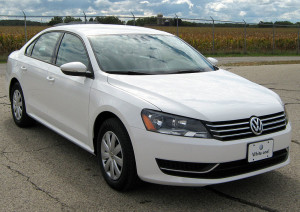 6.32: 2012-2016 Volkswagen Passat
6.32: 2012-2016 Volkswagen Passat
When it comes to roof strength in the mid-sized family car category, the best car you can be in is currently a Passat. It’s capable of supporting more than 6x its weight before caving in by 5 inches, and is the only vehicle in its class to do so. Like every other vehicle on this list, it also comes with roll-sensitive airbags and ESC, as well as a “2016 Top Safety Pick” rating by the IIHS.
If you’re interested in the previous generation Passat (2006-10), it also featured a good SWR of 4.79 and ESC, but did not feature roll-sensitive airbags.
My full 3 across car seat guide to the various generations of the Passat is here.
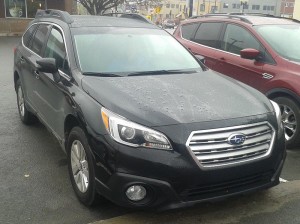 5.36: 2015-2016 Subaru Outback
5.36: 2015-2016 Subaru Outback
Hot on the heels of the Passat are the Outback and Legacy; they share the same SWR because they share a similar roof design. The previous generation Outback was estimated to have a driver death rate of 6, attesting to the high degree of safety present in the recent Outback designs.
If you’re interested in the previous generation (2010-14) Outback, it also featured a good SWR of 4.68 and ESC, as well as roll-sensitive airbags, making it a better choice than the previous generation Passat.
My full 3 across car seat guide to the various generations of the Outback is here.
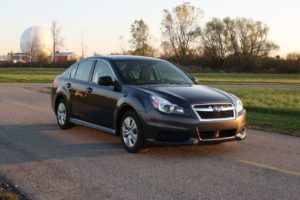 5.36: 2015-2016 Subaru Legacy
5.36: 2015-2016 Subaru Legacy
As noted above, the current Legacy and Outback are largely based on the same platform, and as a result, share the same roof score. The previous generation Legacy was estimated to have a zero driver death rate by the IIHS, making it the first mid-sized non luxury sedan to appear on the zero list.
It’s worth noting that the previous generation (2010-14) Legacy, which featured a zero driver death rate, had ESC and a good SWR of 4.95, but did not feature roll-sensitive airbags. As a result, the prior Outback is, on paper, a better choice. However, the actual survival statistics gave a slight edge, at least regarding the driver, to the Legacy.
My full 3 across car seat guide to the various generations of the Legacy is here.
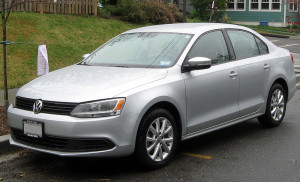 5.35: 2011-2016 Volkswagen Jetta
5.35: 2011-2016 Volkswagen Jetta
VW makes their second appearance with the Passat’s smaller cousin, the Jetta, which has a nearly identical SWR to the Subarus at 5.35.
It’s also worthy to note that the ’11 Jetta was estimated to have a driver death rate of 20 by the IIHS, which, while not perfect, was only bested by the aforementioned Legacy, the Acura TSX, Volkswagen CC (a larger version of the Passat), and Honda Accord in the moderately-priced mid-sized car category.
If you’re interested in the previous generation (2005-10) Jetta, be aware that while it did feature a good SWR of 5.02, it did not feature ESC as standard until ’09 and didn’t feature roll-sensitive side airbags in any year, making it the worst choice so far for a previous generation compromise.
My full 3 across car seat guide to the various generations of the Jetta is here.
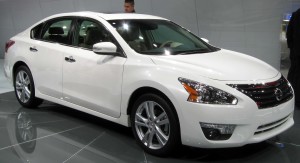 5.29: 2015-2016 Nissan Altima
5.29: 2015-2016 Nissan Altima
The Altima is the first non-VW/Subaru on the list, and has a very respectable SWR of 5.29. Although this generation actually begins in 2013, I only listed it from 2015 onward because this was when roll-sensitive side airbags were added; prior to then, the airbags were only normal side airbags.
If you’re interested in the previous generation (2010-12) Altima, be aware that it did not feature a good SWR, but an acceptable one at 3.79, although it did feature ESC. It also didn’t feature roll-sensitive side airbags. It’s also important to note that it had a rather high estimated driver death rate of 44 during the ’10-’11 model years.
My full 3 across car seat guide to the various generations of the Altima is here.
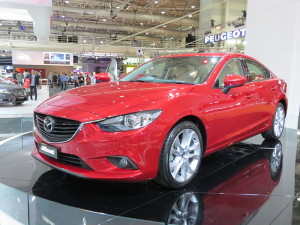 5.21: 2016 Mazda 6
5.21: 2016 Mazda 6
The 6 is the only Mazda to show up on this list, and features a good SWR of 5.21. Although this generation of the 6 began in the ’14 model year, I only include the ’16 because this is when Mazda made the side airbags roll-sensitive.
If you’re interested in the previous generation (2009-13) 6, be aware that it also didn’t feature a good SWR, but an acceptable one at 3.55, although it did feature ESC. As with the previous generation Altima, it also didn’t feature roll-sensitive side airbags. It’s also important to note that it had a rather high estimated driver death rate of 54 during the ’09-’11 model years.
My full 3 across car seat guide to the various generations of the Mazda 6 is here.
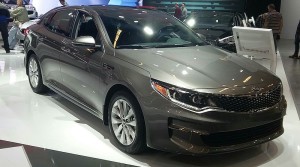 5.19: 2016 Kia Optima
5.19: 2016 Kia Optima
The current generation Optima is structurally similar to the current generation Sonata, and as a result, both share the same roof rating of 5.19.
If you’re interested in the previous generation (2011-15) Optima, it also featured a good SWR of 5.12 and ESC, although it did not feature roll-sensitive side airbags.
My full 3 across car seat guide to the various generations of the Optima is here.
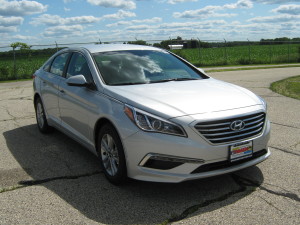 5.19: 2015-2016 Hyundai Sonata
5.19: 2015-2016 Hyundai Sonata
The current generation Sonata, as noted above, shares a platform with the current generation Optima, resulting in a shared SWR of 5.19.
If you’re interested in the previous generation (2011-14) Sonata, it also featured a good SWR of 4.89 and ESC, although it did not feature roll-sensitive side airbags.
My full 3 across car seat guide to the various generations of the Sonata is here.
In conclusion, any of these cars will be among the absolute safest you can be in during a rollover today. They feature ESC to reduce the risks of rollover involvement to begin with, rollover-sensitive side airbags to protect you should rollovers occur, and strong roofs to preserve your occupant space and allow your seat belts and side airbags to do their jobs while the rollover occurs. These are life-saving technologies, and we’re blessed to live in an era where they exist and are widely available and increasingly affordable.
What do I do if the car I bought or am considering wasn’t on the list?
Due to space constraints, I focused on only listing the best of the best moderately mid-sized cars currently available for rollover protection. This doesn’t mean that these are the only safe cars out there right now. Any car with a SWR of 4.0 or higher, ESC, and roll-sensitive side airbags is already going to provide a large amount of protection if you’re unfortunate enough to get into a rollover situation. The current generation (2013-16) Honda Accord, for example, just barely missed the 5.0 cutoff with a 4.92 SWR; like the vehicles on this list, it also features roll-sensitive side airbags and ESC, and would be a great choice for families.
If you’re considering a car that doesn’t have the features above, you’ll want to make sure you’ve got ESC at an absolute minimum, followed by a strong roof, and roll-sensitive side airbags. If you have to choose between a strong roof and roll-sensitive airbags, I’d go with the roof score, presuming you have side airbags in both vehicles. However, ESC is by far the most important of the three technologies to have, as prevention is always better than having to deal with the cure, and avoiding a rollover is much better than having technology to increase your odds of surviving it once it’s already occurring.
We can’t control everything. The safest option is still not driving at all, followed by driving as little as possible. But if you’ve got to drive, drive safely, and do your best to choose a safe vehicle. If you’re going to use it with children, definitely check out the plethora of best practice articles I’ve written here on choosing safe car seats, installation tips, seat reviews, and more information to help you make informed decisions.
I loved writing this article, and I hope you enjoyed reading it. I look forward to writing more articles examining various factors in car safety design and how they relate to keeping you and your loved ones safer while on the road. Stay tuned, remember to avoid common mistakes parents make with car seats, and check out some 3 across car seat guides while you’re here.
If you find the information on car safety, recommended car seats, and car seat reviews on this car seat blog helpful, you can shop through this Amazon link for any purchases, car seat-related or not. Canadians can shop through this link for Canadian purchases.

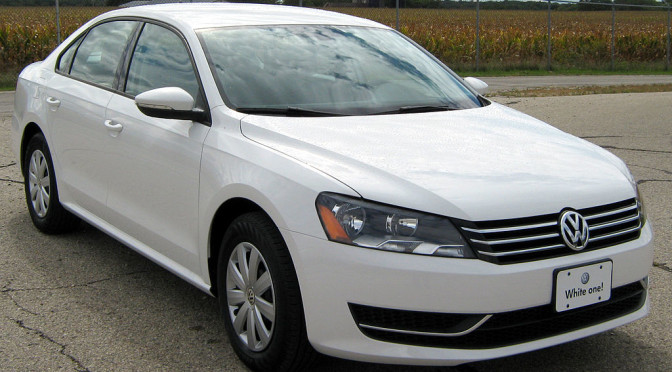

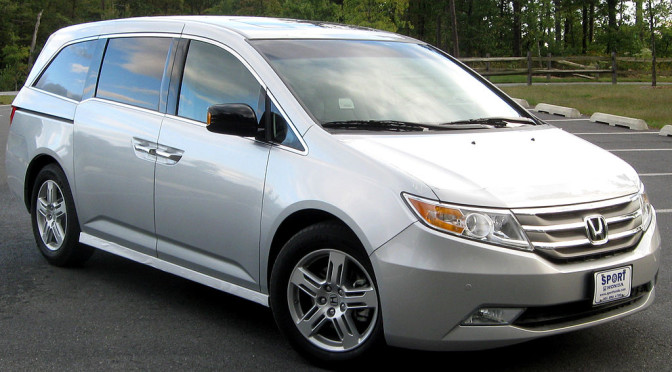

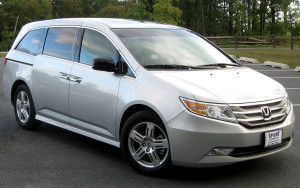
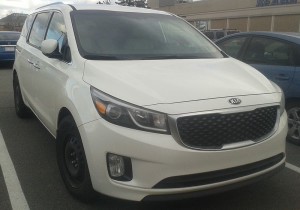 4.82 –
4.82 – 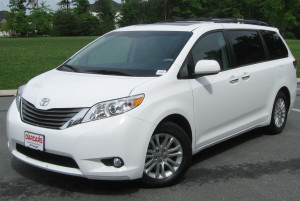
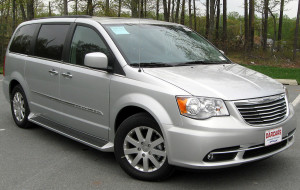
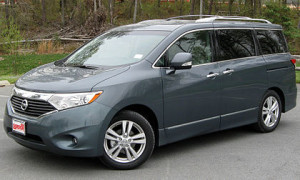 2011-2015 Nissan Quest (not recommended).
2011-2015 Nissan Quest (not recommended).